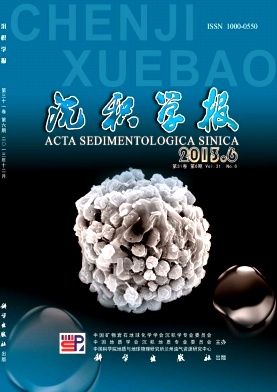CO2 Outgassing and Precipitation of Calcium Carbonate in a Karst Stream: A case study of Baishuwan Spring in Nanchuan, Chongqing
- Publish Date: 2013-12-10
-
Key words:
- karst stream /
- CO2 outgassing /
- precipitation of calcium carbonate /
- Baishuwan Spring in Nanchuan
Abstract: PH, conductivity, dissolved oxygen and concentration of HCO3-, Ca2+ , as well as other anion and cation, was monitored by certain space to explain the evolution of stream water chemistry along the flow path of Baishuwan Spring downstream in Nanchuan, Chongqing, China. After surfacing, stream water chemistry was changed regularly by CO2 outgassing, water became increasingly supersaturated with calcium carbonate and the obviously precipitation occurred. The result shows that, concentration of HCO3-, Ca2+, conductivity(EC) and CO2 partial pressure declined along the flow path, caused by CO2 outgassing, while pH value and saturation index of common carbonate minerals increased. The concentration gradient between atmosphere and water is the main factor affecting the degassing rate, while the creek drainage gradient also has a certain influence. Extent of degassing at the spring vent is decisive factors controlling the carbonate deposition along the flow path. The small flow during dry season, a great degree of degassing, high level of Ca2+ concentration, and the hydraulic disturbance which accelerates CO2 outgassing, as well as the physical adsorption of litter and other substances in the creek drainage, factors above all play active role in deposition of calcium carbonate.
| Citation: | CO2 Outgassing and Precipitation of Calcium Carbonate in a Karst Stream: A case study of Baishuwan Spring in Nanchuan, Chongqing[J]. Acta Sedimentologica Sinica, 2013, 31(6): 1014-1021. |






 DownLoad:
DownLoad: